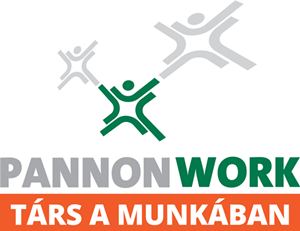The unbelievable devastation of a shattered Syrian city
HOMS, Syria — The war-ravaged buildings in Homs, the Syrian city once dubbed the capital of the revolution, still hold the ghosts of the rebels who fought here.
Inside one, above a gutted paint shop, fighters scrawled their names — Abu Omar, Abu Ratib, Abu Sharif — leaving their mark before surrendering this neighborhood and others around it to government forces nearly two years ago, outgunned and facing starvation.
“Bring me an ice cream and feed me,” one wrote. Close by, in black marker, is a drawing of the three-star flag that became the symbol of Syria’s uprising.
Downstairs are the holes the fighters punched in walls so they could move from house to house without being targeted by snipers.
[Inside Syria’s war: I went to three cities. This is what I saw.]
The rebels are long gone from the areas of the Old City of Homs where they were besieged, the last 2,000 bused out in a U.N.-brokered deal in May 2014. But most of the families that once lived here have still not returned. Broken street after broken street lies silent, aside from the sound of wreckage creaking in the wind.
This yawning hole in the heart of Homs, a city once home to more than a million people, is testament to the challenge of repopulating and rebuilding Syria’s cities. That is a task the World Bank estimates could cost $170 billion and would require international efforts on the scale of the Marshall Plan, which helped Europe recover after World War II.

A boy plays soccer in front of a destroyed house in the Christian neighborhood of Hamidiya on March 16. (Lorenzo Tugnoli/For The Washington Post)
The war has destroyed hospitals, thousands of schools and a third of the country’s homes, as it continues to uproot Syrians. It has left Europe struggling to stem a flood of refugees and finally forging a deal to send new arrivals back to Turkey.
[8 stories to read if you want to understand the Syrian conflict]
But even in areas like Homs, which have been relatively stable in recent years, a lack of both the money to rebuild and a political solution to Syria’s crisis will prevent families from returning anytime soon.
Many are too afraid, and the longer these expanses of rubble sit untouched, the more entrenched past inhabitants will become in their lives elsewhere.
“People have restarted their lives outside,” said Ziad Akras, 43, a member of a neighborhood committee for reconstruction in the Christian area of Bab al-Dreib. “Their children are in schools. They may have found work. They won’t come back.”
In Christian neighborhoods such as Bab-al Dreib, where residents were more supportive of the regime, some families have returned. Here, churches that were destroyed have raised money to rebuild, giving financial assistance to families who want to return. Electricity and water have been restored, but the streets are still eerily empty.

Repairs have started on this house in the Christian neighborhood of Hamidiya. But many buildings in the city remain abandoned. (Lorenzo Tugnoli/For The Washington Post)
Milad Jamal, 36, has reopened his restaurant, though he says it is a shadow of the community hub it once was.
“It’s our neighborhood, so we came back,” he said, adding that his family is one of about 800 families in the area that have returned out of 40,000.
“We were the last to close and we were the first to open,” he said. He paid to rebuild the cafe out of his own pocket, while the church helped him rebuild his house. Nearby, a park that was used as a makeshift graveyard when this area was in rebel hands has been dug up, the bodies of the dead removed by the government. About 500 have been found, Akras said.

Milad Jamal, 36, sits in his restaurant in the Christian neighborhood of Hamidiya. (Lorenzo Tugnoli/For The Washington Post)

The Bustan al-Diwan restaurant, one of the first businesses to reopen. (Lorenzo Tugnoli/For The Washington Post)
The city’s old clock tower, once a focal point of protests, has been restored, the government switching it back on in a celebration a year ago on the anniversary of the end of the siege.
Nearby, the United Nations Development Program (UNDP) has helped clear about 70,000 tons of debris from the central market area and is trying to encourage businesses to return.
But there are few signs of life in other areas of the Old City that were besieged and bombed for three years. The destruction in largely Sunni areas more sympathetic to the rebels was more brutal, making rebuilding a daunting task, even if the political will for it existed.

The interior of a house in the Christian neighborhood of Hamidiya. (Lorenzo Tugnoli/For The Washington Post)

A damaged house in the Christian neighborhood of Hamidiya. (Lorenzo Tugnoli/For The Washington Post)
Khalidiya, the largely Sunni neighborhood where the house with the graffiti stands, was one of the worst-damaged in the fighting in the city. Roofs and building facades are torn away. Scaffolding around the newly repaired dome of the Khalid ibn al-Walid Mosque is the only sign of reconstruction.
[Tale of two cities in Aleppo]
A soldier at an army checkpoint said there are 20 families somewhere in the gray wasteland, but he didn’t sound that convinced. The water and electricity have not been reconnected.
“Where do you start?” said Jihad Yazigi, editor of the Syria Report, a bulletin specializing in the Syrian economy. “There is no large-scale reconstruction because there is no significant reconciliation, because there isn’t money, there’s uncertainty, there’s no will.”
He said reconstruction will need a “vast” international program, and that can only happen once the war ends.
Jamal, the restaurant owner, blames the residents of neighborhoods like Khalidiya for not returning.
“The government is really keen to rehabilitate the city,” he said. “He who did something wrong will always be afraid.” But even if they wanted to come back, there doesn’t appear to be much to return to.
“People need guarantees,” Yazigi said. “People may know that their names are not on a watch list on the border, but they’d still feel very threatened going back.”
The scale of the task is “enormous” said Samuel Rizk, the Syria country director for UNDP, who agreed that there needs to be a political solution of some kind in Syria before any large-scale projects can begin.

The Christian neighborhood of Hamidiya. (Lorenzo Tugnoli/For The Washington Post)
For the moment, the UNDP is focusing on small-scale efforts to build livelihoods and economic recovery, hoping to stem the flow of migrants to Europe.
“A lot of people are leaving for security reasons,” Rizk said. “But a lot of people are also leaving for reasons of opportunity.”
Homs, however, remains a city on edge. Three car bombs exploded in the Zahra district of the city late last year, killing dozens. The 2014 deal allowed some rebels to remain in the al-Waer neighborhood of the city, where a cease-fire was reached in December to let them leave.
Forrás: https://www.washingtonpost.com




